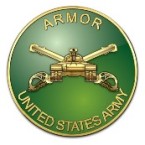Wild Bill
Posts: 6821
Joined: 4/7/2000
From: Smyrna, Ga, 30080
Status: offline

|
Welcome to the faithful and to those just joining us!
I was fourteen when my father finally decided it was time that I learned to drive. He was a big man, and captain of the ship, make no mistake about that! It was an old 1941 Plymouth with a big steering wheel and a hard to maneuver gearshift.
I was not at all sure of myself and that uncertainty was not helping matters. The gears moaned and gnashed their teeth as I shoved it into first. I leaned forward so I could see. It was the famous death stare - death grip kind of driving all first-timers have.
I'd only gone a short distance when an intersection with a stop sign loomed before me. I pressed on the brake pedal very gently, too gently. "Brakes!" my father shouted and his shouts always brought immediate reaction.
My father was also an amateur auto mechanic. He prided himself most of all on his brake jobs. I hit the brakes - hard! I stopped. Oh, did I stop! As he unpeeled himself from the dash and windshield he informed me in his inimitable, colorful way that lesson number one was now at an end.
DON'T GIVE UP!
Scenario design within the Steel Panthers Series of games has about the same effect when you first begin to do it. No doubt many of you have wanted to try your hand at it, but have just never really gotten started. Your first efforts you felt were so inadequate, so "amateurish," that you just gave up in dismay.
So let's give it a try, maybe for you another try. Don't expect perfection. That rarely, if ever happens. Don't expect it now.
I hope you did your homework. It is the foundation. What I am giving you now are the building blocks. If you are just joining us, then go back and read the earlier post "Scenario Design 101 - Art of War#1." Then come back here.
So, you know what you want to do. Now, how do you do it? Well, the first building block is Making the Map.
BATTLEFIELDS ARE IMPORTANT
Some people consider this insignificant in the process. Not so! Not so! The battlefield has often determined the victory of a battle, even more than the opponents caught up in the life and death struggle.
The battlefield was one of the key reasons the Germans lost in the Battle of the Bulge. It was what slowed down Marine advances through the island chains of the Pacific. It can have strong effect on the outcome of any battle.
So don't minimize map making. It is very important. And don't try to pass off a game generated map as a creation. Here, as in so many areas of life, ain't nothing like the real thing, baby.
"I'M NO ARTIST!"
"But," you say, "I am no artist." you don't have to be. The artwork is done. It is now a matter of learning how to utilize it properly. Did you look up at least something on the terrain of the battle you want to create?
What time of year? Was it hilly? Rough? Was it desert, or hedgerows? Start picturing that terrain in your mind. See if you can even find pictures of that type of terrain.
You may not be able to create an exact likeness of the area of the fight, but you should be able to find out the general lay of the land.
If you can't do that, then you need to think of another theme for your scenario.
Before you begin, however, I want you to take a day or two and just look around. Many of you live in big cities. Some live in "the country."
HOW DOES THE REAL THING LOOK?
How do things look? How are hills shaped? Why do roads and rivers have twists and turns?
Remember, both natural and man-made terrain and objects are that way for a reason. Roads bend for a reason; rivers and streams snake their way across the land for a reason.
Road builders would much prefer long flat straight stretches of road. Most curves in a road are there because it is easier to curve the road than to overcome whatever is in front of it. Trains will go around a steep hill if possible. If not, they excavate a tunnel. Waterways will go around high ground.
Why say all of this? Because many people make maps in the game with twisting roads and rivers when there is no reason for it. It just does not look natural.
Riverbanks invariably have foliage, sometimes thick foliage. Where there is water, there will be trees or plant life in abundance. And even forests have breaks in them. Only a few (like the Hurtgen) are so thickly packed with large trees.
What I am getting at is that you want a "natural" looking map. If there are hills, they are nearly always more than a "bump" on the map. Hills slope gradually and they follow a contour level with an occasional dip or twist.
I could go on and on but you get the point.
Keeping all that in mind, I want you to now consider your map. But before you begin designing it, I am going to ask you to do the following. This is a step I want you to take in nearly each step of this process.
PRACTICE MAKES PERFECT
Open the SPWAW editor. Start the game; go to solitaire play, then editor.
Then pick in the center of the screen "Summer (It should already be set to summer - that is the default setting)." Then click on edit.
Notice in passing that there are five types of terrain. There is Desert, Summer, Winter, Jungle and Rough. Only this version of Steel Panthers has so many choices in this area. You'll want to look at all of them.
Now what do you see opening to "Summer" - "Edit?" Just green, lots of green. Okay, that is your canvas. You are now going to paint a map, but before you do, I want you to learn all the buttons on your right, or at least know what they do.
Some are merely tools. Others are terrain graphics and many of them have more than one choice.
YOUR ASSIGNMENT
Your assignment for this week is to take the time to use ALL of these buttons and see just what they do. Try them all. Try all the options.
When you have filled up that map, simply click the erase button, type "y" and start over.
If you ever get something you like and want to keep, click on the diskette (save) button. Then save it to an open map slot, giving any name you choose.
For some ideas of what can be done, browse through the maps you have in your version of SPWAW and get some ideas.
MORE ON SAVING TO COME LATER
Now I will touch upon "saving" your work next week in more detail. It is not a big concern as yet but it will be, believe me as we go further in this process.
LEARNING BY DOING
Remember, this will only help you by doing. Just reading is NOT enough. You must also DO. You'll never be a good mapmaker, driver, musician or lover ;) , unless you practice. I got better using the brakes in the car because I practiced.
You'll begin to get the feel for map making by using it. And keep practicing this week. Get comfortable with what it will do and won't do. Some things won't work. Find out for yourself what will and what won't.
I learned how to make maps by trial and error. So did every other designer. So will you. There is no shortcut...no magic. You gotta "do" to learn.
QUESTION?
Now, you have your assignment. Please do it. If you have questions about the process of map making, post them here this week and I or other competent scenario designers will do our best to answer them for you. Remember to look at some of the sample maps already in the SPWAW game for some suggestions as to what you might do.
Advanced Tips:
1. Does that dull "clunk" sound annoy you each time you click on the map or in the game?
You can remove it by going to the SND directory of SPWAW and moving the 1.wav file to the save directory. I did not delete mine, just moved it to another directory. Now when I click in SPWAW, no "clunk!" I like that!
2. You know of course, that you can mix terrain features. For late fall, early winter, or early spring, I use a mix of summer and winter terrain features.
I would suggest practicing with it and see how it looks. Don't overdo it. Also use winter trees for the above mentioned seasons.
3. Speaking of trees, there are winter trees that looked "burned out."
Pick the ones with no snow, and notice that they have no foliage. These are good for shelled areas. I also use them for areas like Tunisia where a lot of foliage is just not abundantly green.
4. Then if you want some interesting terrain, mix your rough terrain using the desert rough for Pacific islands, coral reef, and underneath runways. It gives a good effect.
5. Want a building, even a multihex building on fire? It can be done. Pick the building you want. Click in a tree icon in the same hex. Keep clicking until you get a small one that fits under the building nicely.
Then smash it with a large crater. Click on it two or three times until you get the level of fire you want.
I find this very effective when use "multi-hex" rubbled buildings. It leaves a smoldering effect in the ruins.
Wild Bill
_____________________________
 In Arduis Fidelis Wild Bill Wilder Independent Game Consultant
|
 Printable Version
Printable Version











 New Messages
New Messages No New Messages
No New Messages Hot Topic w/ New Messages
Hot Topic w/ New Messages Hot Topic w/o New Messages
Hot Topic w/o New Messages Locked w/ New Messages
Locked w/ New Messages Locked w/o New Messages
Locked w/o New Messages Post New Thread
Post New Thread